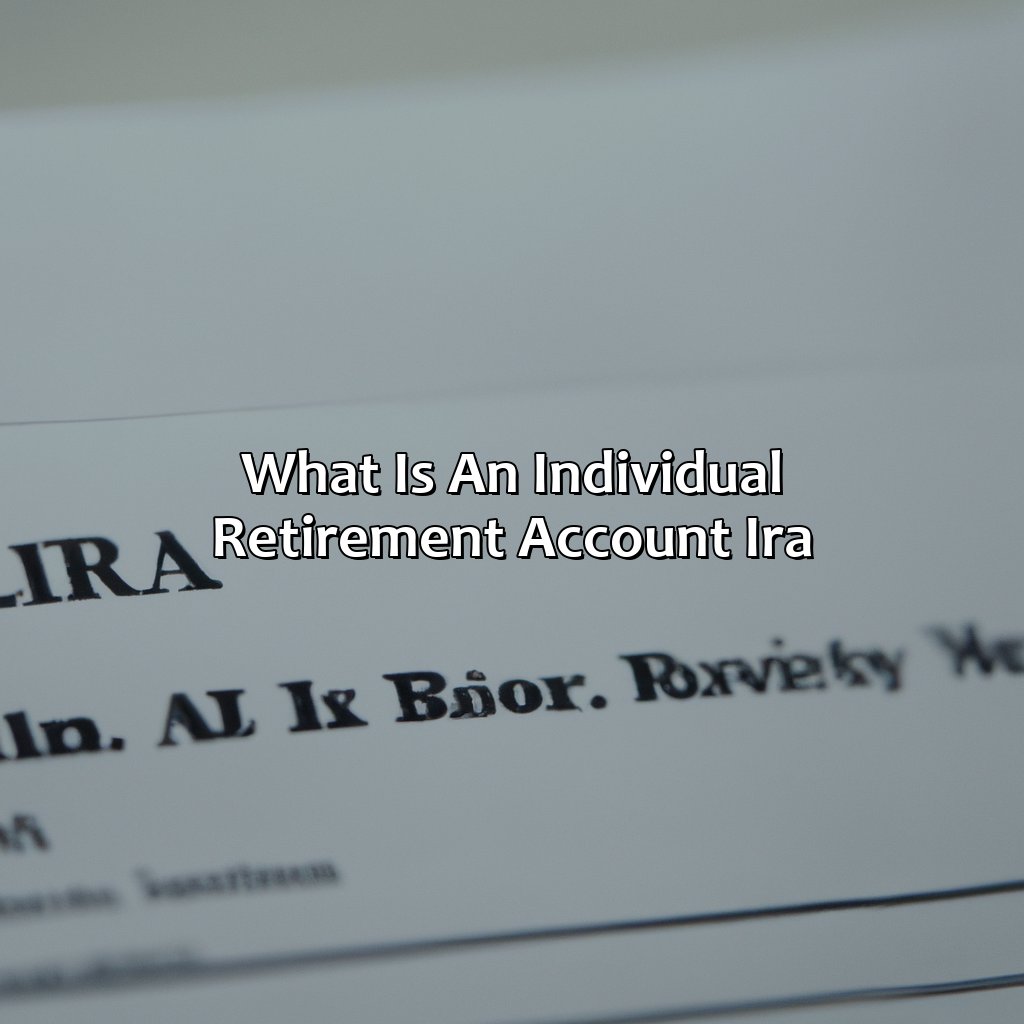What Is An Individual Retirement Account Ira?
Key Takeaway:
- An Individual Retirement Account (IRA) is a retirement savings account that provides tax advantages to help individuals save for retirement.
- There are two main types of IRAs: Traditional IRA and Roth IRA. While Traditional IRA contributions are tax-deductible, withdrawals are taxed as income. Roth IRA contributions are not tax-deductible, but withdrawals are tax-free.
- Contribution limits and tax advantages differ for each type of IRA. It is important to understand withdrawal rules and penalty fees to make informed decisions about retirement savings.
Are you looking for a retirement plan that provides tax advantages? An Individual Retirement Account (IRA) may be the perfect solution for you. This article provides an overview of the important things to know about IRAs so you can maximize your savings for retirement.
Definition of Individual Retirement Account (IRA)
Individual Retirement Account (IRA) is a tax-advantaged investment account that allows individuals to save for retirement. The account is designed to help individuals grow their savings by investing in different financial products such as stocks, bonds, and mutual funds. IRA provides tax benefits which make it a popular choice among investors. Contributions made to the account are either tax-deductible (Traditional IRA) or are made with after-tax dollars (Roth IRA). The funds in the account grow tax-free until retirement, and withdrawals made after the age of 59.5 are taxed at the prevailing income tax rate.
Investors have the freedom to choose from a variety of investment options, and the account holder has complete control over the transactions. The account can also be transferred to another IRA account or rolled over into a 401(k) account. Investors can choose between a Traditional IRA or a Roth IRA based on their individual needs. Traditional IRA provides tax advantages at the time of contribution, while Roth IRA provides tax-free withdrawals after retirement.
It’s important to note that there are contribution limits for both Traditional and Roth IRA, and these limits may change from year to year. It’s also important to understand the penalties for early withdrawals, as they can significantly impact the overall return on investment.
Pro Tip: Consider consulting with a financial advisor to determine which IRA option is best suited for your individual needs and investment goals.
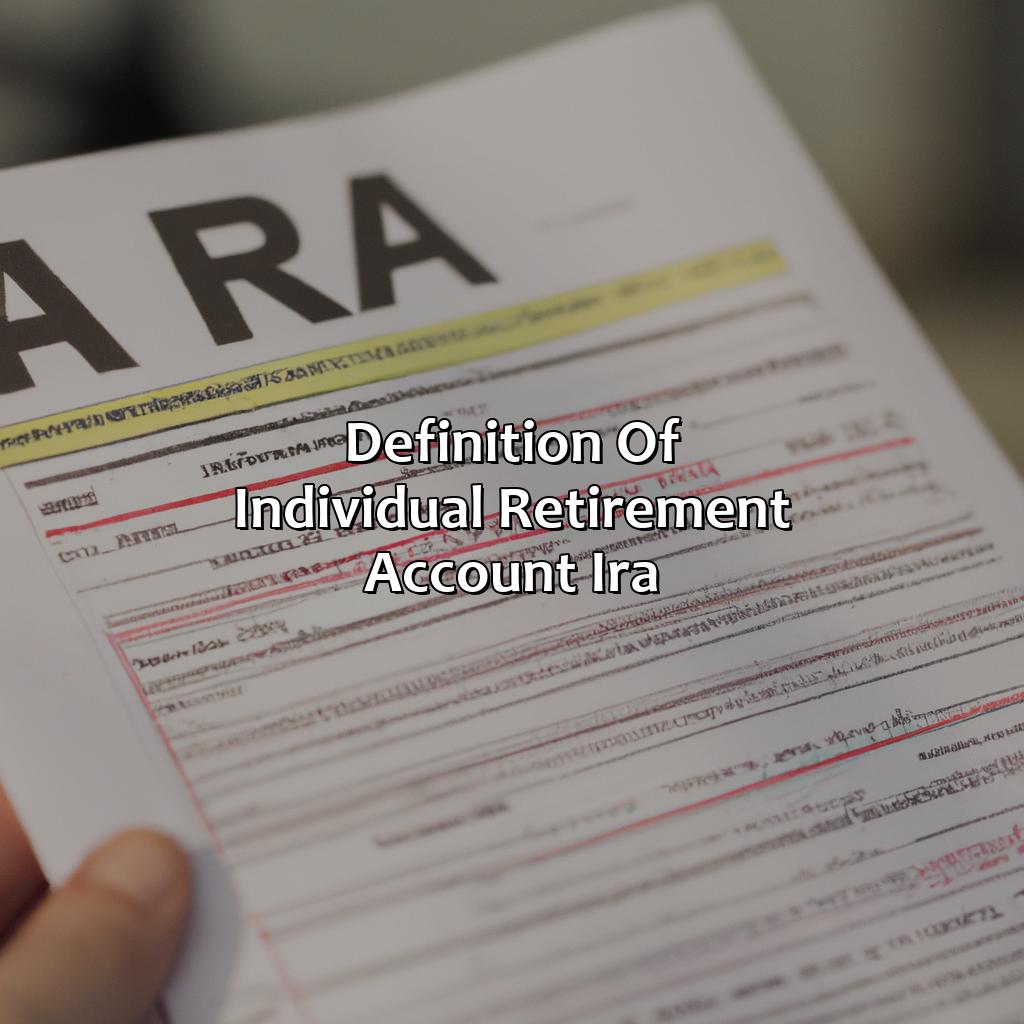
Image credits: retiregenz.com by James Duncun
Types of IRAs
Want to learn about IRAs? Check out the Types of IRAs section. You’ll find two sub-sections: Traditional IRA and Roth IRA. These will help you make an informed decision about your investment plans!
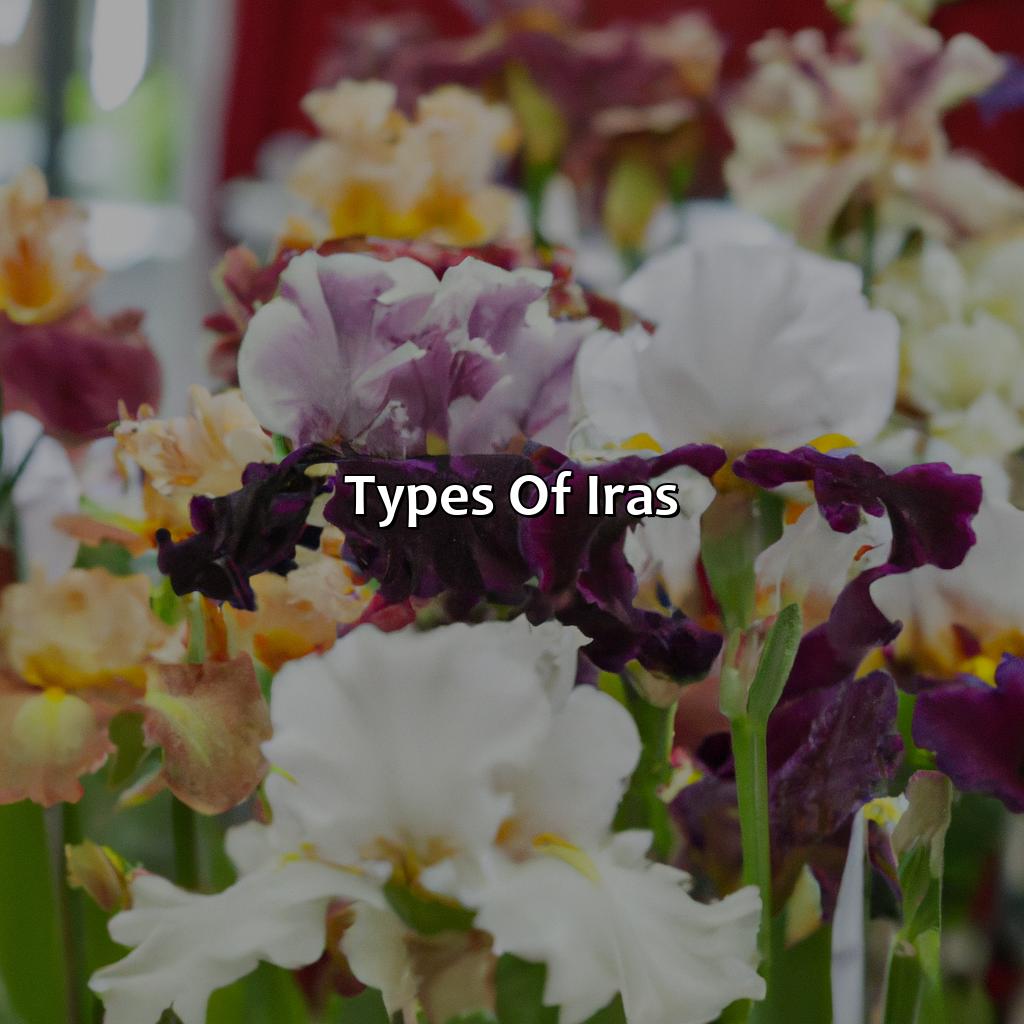
Image credits: retiregenz.com by Adam Jones
Traditional IRA
A traditional retirement account IRA is a type of Individual Retirement Account that provides tax benefits for individuals saving for retirement. Contributions made to this type of IRA can be made with pre-tax income, and the account grows tax-free until withdrawal. In order to withdraw funds without penalty, the account holder must be at least 59 and a half years old. Additionally, contributions may be deductible from taxable income based on income level.
Unlike Roth IRAs, contributions to a traditional IRA are tax-deductible in the year they are made. This means that an individual who invests in a traditional IRA can reduce their taxable income by the amount contributed, potentially reducing their overall tax liability. However, once funds are withdrawn from the account during retirement, they will be taxed as ordinary income.
It’s important to note that there are contribution limits for Traditional IRAs and factors such as age and income level can also impact eligibility and contribution amounts.
A recent study found that nearly 45% of American households have some kind of retirement account savings. (source: Investment Company Institute)
Saving for retirement is like investing in a pair of comfy shoes – it may not be sexy, but it’ll make all the difference in the long run.
Roth IRA
A Roth Individual Retirement Account refers to a tax-advantaged account that is designed to help individuals save for retirement. It allows an individual to make contributions after tax and then withdraw funds tax-free during retirement. With a Roth IRA, you can have flexibility in withdrawing your money without being taxed on it.
What makes the Roth IRA unique is its taxable feature. Unlike traditional IRAs, you can avoid paying taxes when you withdraw your contributions or gains as long as you meet certain requirements such as being over 59 and a half years old, having the account open for five years or more, or making qualified distributions.
Notably, traditional IRAs follow the opposite order when it comes to taxation – they allow pre-tax contributions but do not come with tax-free withdrawals. Hence, the tax savior in Roth IRAs has made them popular among those who want to pay taxes upfront instead of later in life.
Furthermore, a Roth IRA’s contribution limit varies depending on age. For example, those under 50 may contribute up to $6,000 annually while anyone over 50 is allowed to make catch-up contributions of an additional $1,000 annually.
Did you know that Senator William Roth Jr proposed the legislation that led to the creation of Roth IRAs? It was approved by Congress and signed into law by President Clinton in 1997. Since then, millions of Americans have used this retirement savings option to build their nest egg tax-free!
Who needs a social life when you can contribute to your IRA and get that sweet tax advantage?
Contribution Limits and Tax Advantages
Maximize retirement savings with an IRA! Understand the contribution limits and tax advantages. Check out the traditional and Roth IRA sections to decide which is best for you. Learn the contribution limits and tax incentives of each. This will help you plan a secure future after retirement.

Image credits: retiregenz.com by Yuval Jones
Traditional IRA Contribution Limits and Tax Advantages
Individual Retirement Accounts (IRAs) offer valuable tax advantages for contributors. You can make contributions to a Traditional IRA up until the filing date of your taxes, and these contributions may be tax-deductible. The amount you can contribute per year is limited based on factors such as age and income.
- Contributors under 50 years old can contribute up to $6,000 per year in 2021, while those 50 or older have a catch-up contribution limit of $1,000 on top of the standard limit.
- Additionally, Traditional IRA contributions can grow tax-deferred until withdrawals begin.
Contributions made with pre-tax dollars ultimately reduce taxable income at the time they are made, assisting in saving money on those taxes due. Limits for traditional IRAs often change annually or remain consistent over several years that will be adjusted for inflation.
Pro Tip: Consider converting to a Roth IRA if your income is high enough that you are ineligible for a Traditional IRA tax deduction.
Saving for retirement is like investing in a clown car – you hope it’s worth it when you finally get in.
Roth IRA Contribution Limits and Tax Advantages
Roth IRA is an investment account with tax-free earnings and qualified withdrawals. It offers annual contribution limits and tax benefits to individuals who meet the requirements. Contributions are made with after-tax dollars, but the gains grow tax-free. Additionally, Roth IRAs do not have required minimum distributions.
The contribution limit for Roth IRA in 2021 is $6,000 for those under 50 years of age and $7,000 for those above the age of 50. Contributions can be made until the due date of taxes each year. This feature allows people more time to add to their account and save on taxes.
An essential advantage of a Roth IRA is that it does not require the owner to take out any money at any particular point in time; there are no mandatory distribution rules as compared to traditional IRAs where they do exist.
According to Forbes magazine’s research [source], Roth IRA accounts have become increasingly popular among Millennials owing to its individual control over assets and avoiding hefty taxes in retirement days. If only breaking up with your IRA was as easy as ghosting them, but instead you’re stuck with pesky penalty fees and withdrawal rules.
Withdrawal Rules and Penalty Fees
Learn the rules of taking money from a Traditional IRA or Roth IRA account. Understand the penalty fees associated with early withdrawal. This section will give you insights about Withdrawal Rules and Penalty Fees. Get information on how IRA withdrawal works.

Image credits: retiregenz.com by Joel Washington
Traditional IRA Withdrawal Rules and Penalty Fees
An IRA is a retirement savings account that allows individuals to save for their future while receiving tax benefits. Withdrawal rules and penalty fees exist to discourage early withdrawals from the account before retirement. The rules vary depending on the type of IRA.
For traditional IRA accounts, withdrawals made before the age of 59 and a half are subject to both income tax and a 10% penalty fee. However, certain circumstances such as disability or payment of medical bills can qualify an individual for exemption from penalty fees.
In addition, once an individual reaches age 72, they must take required minimum distributions (RMDs) from their traditional IRA each year. Failure to do so results in a penalty fee equivalent to 50% of the amount that should have been distributed.
To avoid penalties, individuals should carefully plan and consider all options before making any withdrawals from their traditional IRA. Options include setting up a payment schedule to avoid large withdrawals or opening a separate emergency savings account. It is important to consult with a financial advisor when considering any changes to retirement savings plans.
Thinking of taking out money from your Roth IRA early? You might want to reconsider, unless you’re a fan of penalty fees and disappointment.
Roth IRA Withdrawal Rules and Penalty Fees
When it comes to accessing your Roth IRA funds, there are specific rules and fees to keep in mind. Withdrawing funds before age 59 and a half may incur a penalty fee of 10%. However, penalty-free withdrawals can be made for certain circumstances such as buying a first home or paying for higher education expenses. Regular withdrawals after age 59 and a half are subject to taxes but do not carry any penalties.
It’s important to note that Roth IRA contribution withdrawals are always tax-free and penalty-free due to them being made with post-tax dollars. Additionally, you may withdraw contributions at any time without facing tax implications or penalties.
It’s worth considering that leaving your funds untouched until retirement can significantly benefit your overall savings as Roth IRAs offer tax-free growth over time. Therefore, maintaining a long-term saving strategy can help maximize the value of your savings.
A friend of mine withdrew their Roth IRA early for a non-qualifying reason and was hit with unexpected penalty fees. They learned the importance of understanding the withdrawal rules beforehand and now plan their finances accordingly.
Choosing between a Traditional IRA and Roth IRA is like trying to decide between a slice of pizza and a salad – one is tempting now, but the other will pay off in the long run.
Comparison of Traditional IRA and Roth IRA
Compare the perks of Traditional and Roth IRA! Know their key differences. Traditional IRA and Roth IRA provide lots of solutions for retirement planning. Pick the one that suits your needs best!
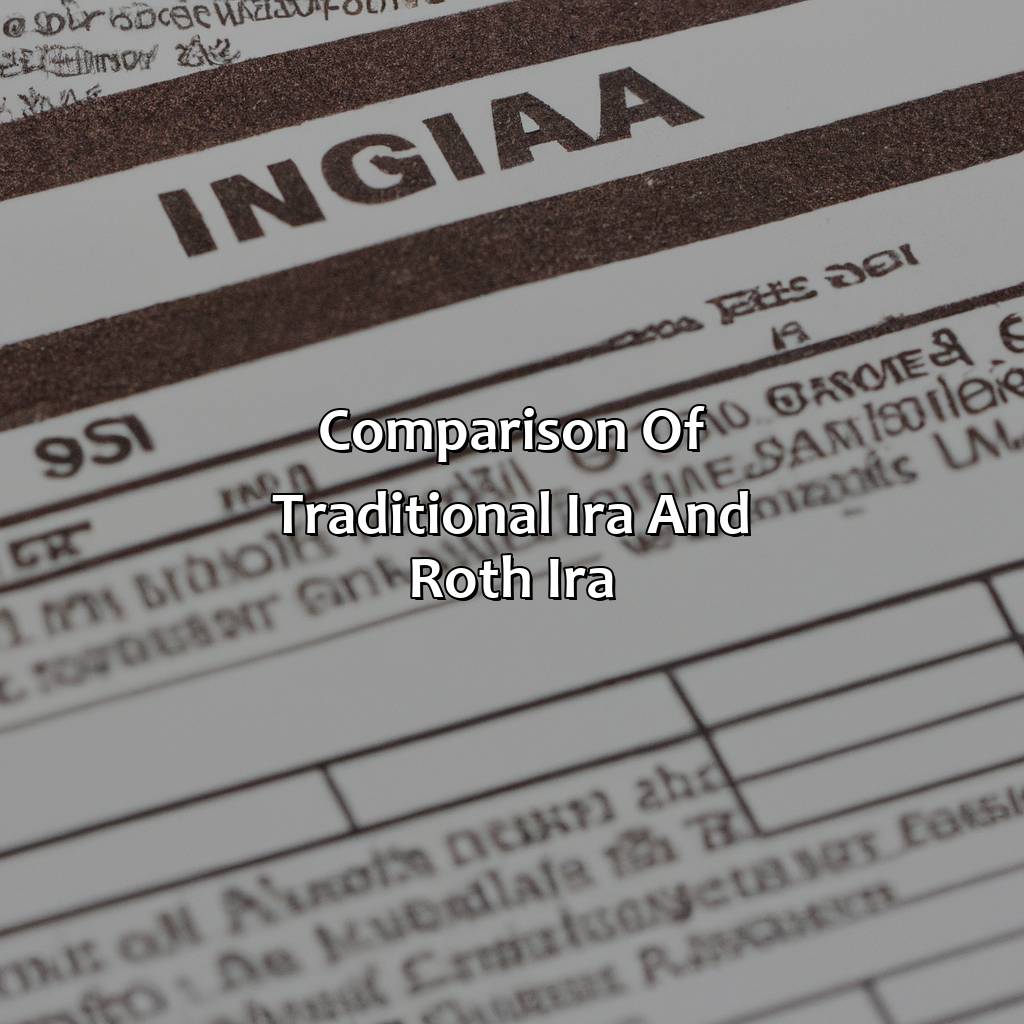
Image credits: retiregenz.com by Harry Washington
Benefits of Traditional IRA
A Traditional IRA provides numerous advantages to account holders.
- Contributions may be tax-deductible, reducing taxable income for that year.
- The earnings on contributions grow tax-deferred until the time of withdrawal.
- Withdrawals can begin at age 59 and a half without penalty and are taxable at the recipient’s current income rate.
- The account holder has ‘do-over’ options or recharacterization after an unintentional contribution mistake is made.
- A traditional IRA allows you to pass assets to heirs in a tax-efficient manner, including lower taxes and stipulations around when beneficiaries must withdraw funds, keeping more money within the family unit.
When it comes to selecting between Roth and Traditional IRA investment accounts, understanding the nuances of each choice is paramount before making any investment decisions. The Traditional IRA benefits from deferred tax payments and allows for deductions on current-year contributions while also providing some necessary estate planning tools.
One additional advantage of investing in a Traditional IRA over other options is that certain individuals may receive Saver’s Tax Credits that provide benefits suitable for all income levels.
Pro Tip: Consult with your accountant or financial advisor when considering opening a Traditional IRA to ensure maximum benefit returns.
Why settle for a regular IRA when you can have a Roth IRA and enjoy all the benefits of tax-free withdrawals? It’s like getting a retirement party twice!
Benefits of Roth IRA
Roth IRA – Advantages and Benefits
Roth IRA is a retirement saving account that offers numerous benefits. Here are some advantages of having a Roth IRA:
- Tax-free Withdrawals – You can make tax-free withdrawals once you have reached the age of 59 and a half.
- No Mandatory Withdrawals – Unlike traditional IRA, Roth IRA has no mandatory withdrawal requirements.
- Tax-Free Growth – The money invested in Roth IRA grows tax-free, meaning all the earnings are yours to keep.
- No Age Limits – There are no age limits for contributing to a Roth IRA as long as you have earned income.
- Flexibility – You can withdraw your contributions from the account any time without penalty or taxes.
- Estate Planning – With its unique rules on inheritance, Roth IRA offers estate planning benefits compared to traditional IRAs.
Moreover, unlike traditional IRAs where contributions may be subject to income restrictions, Roth IRAs offer more opportunities for higher-income individuals to save for retirement.
Pro Tip: Consider a Roth conversion if you have traditional funds since it allows you to convert your taxable funds into a virtually tax-free investment opportunity.
Don’t let your retirement plan be a game of eeny, meeny, miny, moe – choose the right IRA like a pro!
Choosing the Right IRA for You
- To discover the best IRA account for you, take these steps.
- Consider various factors before opening an Individual Retirement Account.
- When you’ve decided which is right, proceed with the steps to easily open an IRA account.
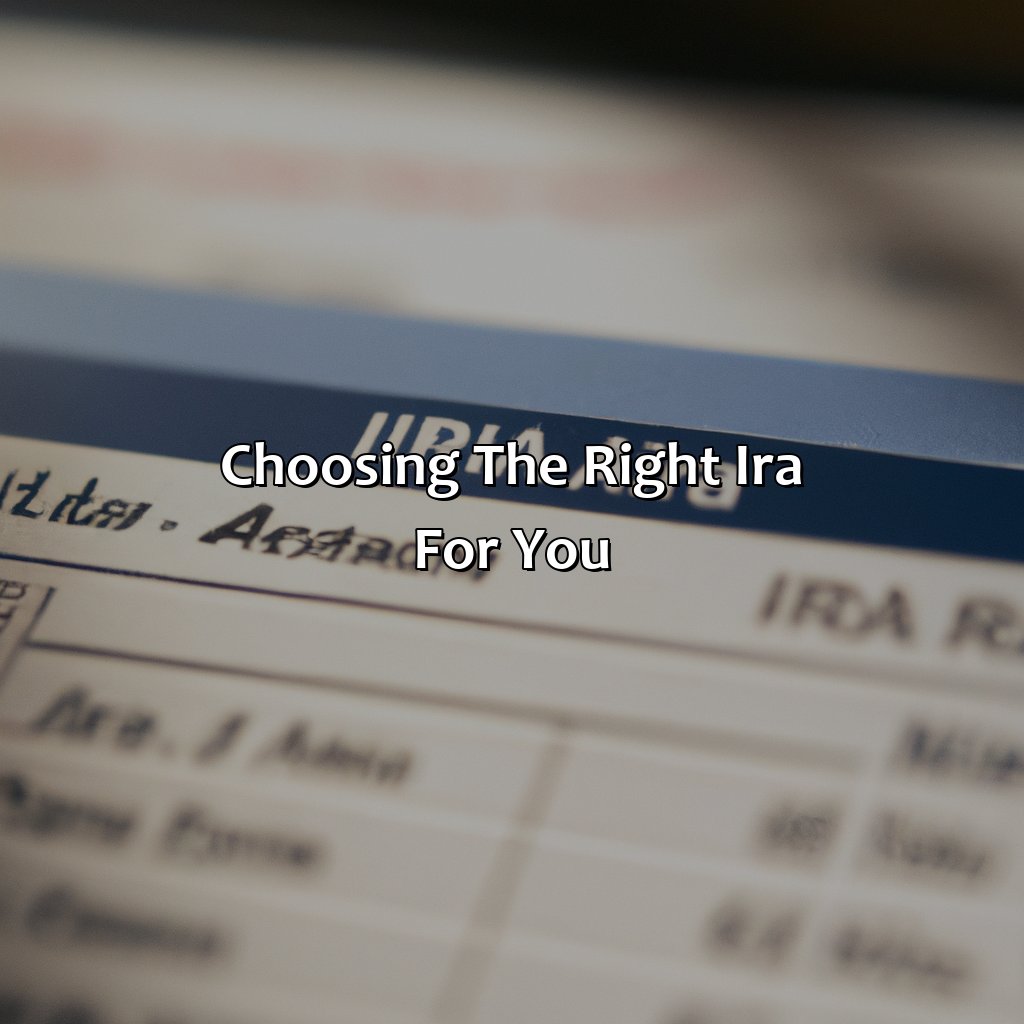
Image credits: retiregenz.com by Joel Duncun
Factors to Consider
When deciding on your Individual Retirement Account (IRA), there are several important factors to consider for making the best choice that suits your specific needs. Below is a detailed breakdown of what to look out for before selecting an IRA account.
Factors to Consider:
| Factor | Traditional IRA | Roth IRA |
|---|---|---|
| Tax Deductibility | Contributions may be tax-deductible. | Contributions are not tax-deductible. |
| Taxation Upon Withdrawal | Taxed as income. | No taxes on qualified withdrawals. |
| Eligibility Requirements | Mandatory distribution age and no income limitations for contributions. | No mandatory distribution age, but contributions have income limits. |
| Limits on Contributions per year (2021) | $6,000 (or $7,000 if over age 50) | $6,000 (or $7,000 if over age 50) |
It’s also important to consider investment choices and fees associated with each account type when making your decision. Be sure to consult with a financial advisor before finalizing any decisions.
Remember that the benefits and drawbacks of IRAs depend largely on individual circumstances. There are no one-size-fits-all solutions.
Ensure that you maximize all available options in order to have enough money saved for a comfortable and financially secure retirement. Take advantage of any employer-sponsored retirement accounts such as a 401k, in addition to your personal IRA.
Don’t miss out on the potential benefits that come with having a well-planned IRA account. Start today.
Don’t wait until retirement to start your IRA account, because if you do, you’ll have to start collecting cans for survival.
Steps to Open an IRA Account
To open an IRA account, you need to follow a series of steps. The process is simple, but it helps to have guidance that can make it even easier.
Here is a guide on how to open an IRA account:
- Choose the type of IRA account you want (Traditional or Roth)
- Select a broker or financial institution
- Complete the application process
- Fund your account with cash or assets
- Select investments based on your risk tolerance and investment goals
It’s important to note that both Traditional and Roth IRAs have different tax implications and eligibility requirements. Therefore, it’s recommended to research and evaluate which type works best for individual circumstances.
Additionally, some brokers may require minimum deposits or charge fees, so consider these factors before selecting one.
According to Forbes, “the largest IRA custodians serve more than 20 million accounts combined.”
Five Facts About Individual Retirement Accounts (IRAs):
An Individual Retirement Account (IRA) is a type of retirement savings account that allows individuals to save for retirement with tax-free growth or on a tax-deferred basis (Source: IRS)
There are two main types of IRAs: traditional and Roth (Source: Fidelity)
Contributions to traditional IRAs are tax-deductible, while contributions to Roth IRAs are made with after-tax dollars but offer tax-free withdrawals (Source: Investopedia)
There are limits on how much individuals can contribute to IRAs each year, depending on their age and income (Source: CNBC)
IRAs can be invested in a variety of assets, including stocks, bonds, mutual funds, and real estate investment trusts (REITs) (Source: Forbes)
FAQs about What Is An Individual Retirement Account Ira?
What is an individual retirement account (IRA)?
An individual retirement account (IRA) is a type of savings account that is designed to help people save for retirement. It provides tax advantages that help people save more money than they would be able to with a regular savings account.
Who is eligible to open an individual retirement account (IRA)?
Anyone who earns income is eligible to open an individual retirement account (IRA). This includes people who are employed and those who are self-employed. There are also no age restrictions for opening an IRA, but there are different rules regarding contributions and distributions depending on your age.
What are the benefits of an individual retirement account (IRA)?
The benefits of an individual retirement account (IRA) include tax advantages, flexibility, and control. IRAs allow you to save money on a tax-deferred basis, which means you won’t pay taxes on your earnings until you withdraw the funds. They also allow you to choose your own investments, providing flexibility and control over your retirement savings.
What are the different types of individual retirement accounts (IRAs)?
There are two main types of individual retirement accounts (IRAs): traditional IRAs and Roth IRAs. Traditional IRAs allow you to deduct your contributions from your taxable income, while Roth IRAs do not provide any tax deduction upfront. However, Roth IRA contributions grow tax-free, and qualified withdrawals are also tax-free.
How much can I contribute to my individual retirement account (IRA) each year?
The amount you can contribute to your individual retirement account (IRA) each year depends on your age and the type of IRA you have. For 2021, the contribution limit for traditional and Roth IRAs is $6,000 for individuals under 50 and $7,000 for individuals 50 and over. However, these limits can change from year to year.
When can I withdraw money from my individual retirement account (IRA)?
You can begin withdrawing money from your individual retirement account (IRA) penalty-free at age 59 ½. However, if you withdraw money before this age, you may have to pay a penalty. There are exceptions to this rule, such as hardship withdrawals and withdrawals for certain qualified expenses.
 Checkout this IRS Loophole
Checkout this IRS Loophole 
